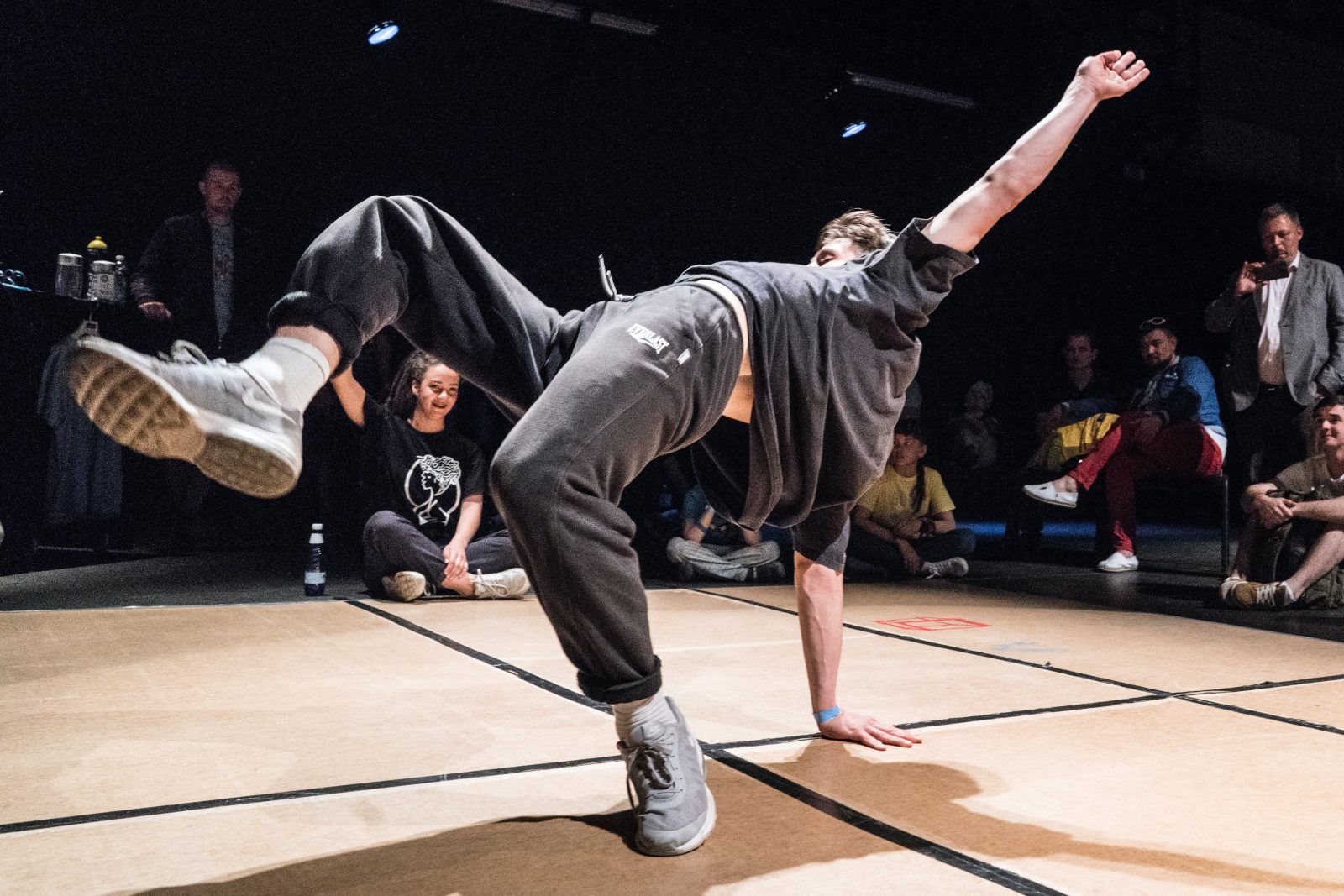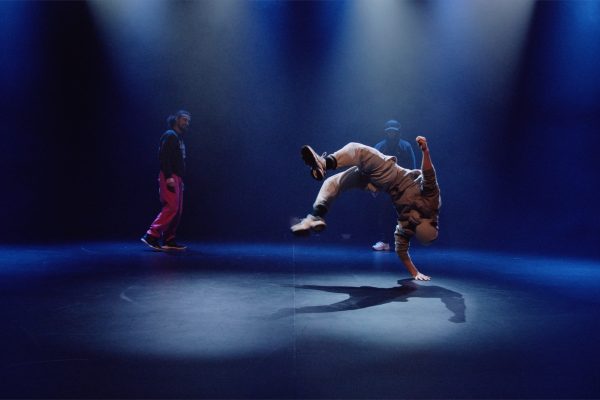This article was originally published in the Summer 2022 print issue.
This article is published through our Regional Reporter Program. We acknowledge the support of the Canada Council for the Arts through the Digital Now initiative.
Ten years in the works, the Oxford, Handbook of Hip Hop Dance Studies is now in the final stages before publication. The handbook is an anthology of perspectives on hip hop/street dance and culture edited by Mary Fogarty, a b-girl and associate professor at York University, and Imani Kai Johnson, an interdisciplinary scholar and assistant professor at the University of California, Riverside.
The anthology (publication date TBD) consists of 29 chapters by 32 contributors from various dance practices and research fields, including international breaking legends Ken Swift, Storm and YNOT, as well as Canadian hip-hop and funk-style dancers Marc “Scramblelock” Sakalauskas, Helen Simard, Leah “McFly” McKesey, Diana “Fly Lady Di” Reyes, Stephen “Buddha” Leafloor, Tony Ingram and Fogarty herself.
Only recently, in the last few decades, has hip hop entered the world of academia; once difficult to find, tangible resources and archived materials have slowly become more accessible. Soon, the Oxford Handbook of Hip Hop Dance Studies will become a meaningful addition to the growing collection of work from around the world.
“I think a lot of academic thought is about framing what’s new about something [or] who’s the first to do things. And I kind of like to challenge that model,” says Fogarty. “Maybe this isn’t the world that we want to create where it’s just about getting things out first, and this is more about doing things right. I think what we tried to do with this volume is do things right.”
Fogarty explains that if she had chosen the easiest route and collected only the perspectives of scholars, the handbook would have come together much faster. However, it was important to her to place the voices of dance practitioners at the forefront of the volume, even if it meant that the project would take longer. And finding dance artists who were willing to write and had the time and capacity to do so was a major challenge. “If I had started the project this year, it would have been easier – there’s so many practitioner-scholars now,” she says. But when she started on the book 10 years ago, that wasn’t the case.

Including as many diverse voices as possible was also paramount for the coeditors. “This was really pushing to also ask and advocate for change in the academy, of whose voices are represented, who gets to tell whose stories,” says Fogarty. The result is a book that observes many facets of hip hop through a variety of lenses like critical race theory, anticolonialism, intersectional feminism and more.
However, Fogarty and Johnson are frustrated that there are still voices missing from the book. “Part of the feelings of defeat are about wishing that you could have everyone’s voice, especially the most marginalized because the most marginalized people don’t always have time to sit down and write a chapter. That’s the reality,” says Fogarty.
That said, Fogarty believes that the anthology’s most important contribution to academia is that it doesn’t oversimplify a rich and complex culture. “You see all the discrepancies, and that’s what I think is beautiful about it,” says Fogarty.
Another significant part of the book: the graffiti cover. The image features a sculpture by Carlos Rodriguez, a prominent graffiti writer from New York known as Mare139. He is a first-generation hip-hop artist known for his subway graffiti and sculptural work. The work featured was inspired by the movement of Italian b-boy Maurizio “The Next One” Cannavò of Battle Squad Crew. Graffiti is one of the four founding elements of hip hop, along with DJing, MCing (or rhyming/rapping) and breaking.
“It’s a big deal for people in hip hop that it’s a graffiti design,” says Fogarty.
Dance Media Group strengthens the dance sector through dialogue. Can you help us sustain national, accessible dance coverage? Your contribution supports writers, illustrators, photographers and dancers as they tell their own stories. Dance Media Group is a charitable non-profit organization publishing The Dance Current in print and online.

Tagged:






